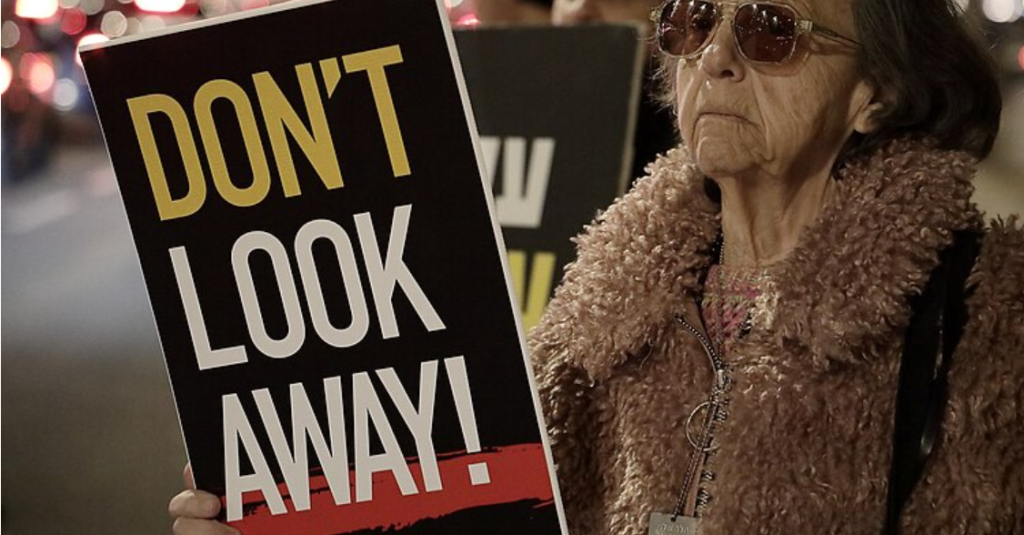Half the Population Faces Imminent Famine.
Others are reading now
he Integrated Food Security Phase Classification (IPC) Famine Review Committee, comprising independent international experts from the United Nations, governments, and NGOs, including the global nonprofit Action Against Hunger, announced that famine is imminent across Gaza.
This dire prediction indicates a significant escalation in the humanitarian crisis in the region, with 50% of households now experiencing “Catastrophic” levels of hunger, the most severe crisis level defined by the IPC.
The report marks a sharp increase from December 2023, when 17% of Gaza’s population was reported to be one step away from famine. The situation has deteriorated rapidly, with projections indicating that within the next four months, 70% of Gazans in the north will be at risk of famine. Famine-like conditions are defined by the IPC when food security, nutrition, and mortality conditions affect at least 20% of the population.
The Ministry of Health in Gaza reports that approximately one in three children are now acutely malnourished, with two in 10,000 dying from starvation.
Also read
The northern part of the Gaza Strip, home to more than half of the total population in Phase 5, is nearly cut off from humanitarian access, leaving over 160,000 people on the brink of starvation. Rafah, now the most populated area of the Strip due to internal displacement, is also severely affected by extreme food insecurity.
Vincent Stehli, Director of Operations at Action Against Hunger, shared insights into the organization’s efforts in Gaza, stating, “Despite extreme hardship, we continue to work in Gaza, distributing food and water and providing sanitation and hygiene services that have reached more than half a million people since October 2023.” Reports of people resorting to eating animal feed underscore the desperation of the civilian population.
The humanitarian assistance currently reaching Gaza is insufficient to sustain the over two million people trapped in Rafah, with 30% at risk of starvation. Early reports on malnutrition are alarming, with at least 27 deaths from malnutrition and dehydration in northern Gaza, according to the Global Nutrition Cluster and the Ministry of Health in Gaza.
The slow death from extreme food shortages is marked by intense pain, electrolyte imbalances, apathy, fatigue, physical and psychological deterioration, tissue degradation, and damage to key organs. “We’ve been working in Gaza for 20 years and I’ve never seen anything like it,” Stehli warned. “80% of the children have infectious diseases; 70% have diarrhea. They don’t have enough food. Health services can’t function. It’s a perfect mix for malnutrition to have devastating impacts. This is just the beginning.”
Action Against Hunger’s Work in Gaza
Since 2005, Action Against Hunger has been delivering humanitarian assistance in Gaza, including the distribution of fresh and dry food, hot meals, water trucking, solid waste management, and the distribution of hygiene kits and shelter. The organization advocates for an immediate and permanent ceasefire, emphasizing that starvation and hunger should never be used as weapons of war.
Action Against Hunger urges all parties to the conflict to achieve an immediate and sustained humanitarian ceasefire, protecting civilians and civilian infrastructure, and allowing for a massive scale-up in the delivery of lifesaving humanitarian assistance. The organization also calls on third-party states to promote and monitor the implementation of UN Security Council Resolution 2712, which calls for an urgent humanitarian pause in the fighting and the establishment of safe corridors throughout the Gaza Strip.
Links Between Conflict and Hunger
The conflict in Gaza directly undermines the food security of its population, with ongoing hostilities creating major obstacles to food cultivation and production. The majority of fishing activities have ceased, and agricultural land has been devastated by explosives. The availability of basic food staples is extremely limited, with many food shops and markets destroyed. Soaring prices have made food unaffordable for most people, and 1.7 million internally displaced people lack the means to prepare nutritious food.
The provision of humanitarian assistance, including food aid, is a critical emergency measure that saves lives. However, restrictions on access to commercial goods and humanitarian aid have made it impossible for civilians to meet their most basic needs.
About Action Against Hunger
Action Against Hunger leads the global movement to end hunger, reaching 28 million people every year with proven hunger prevention and treatment programs. Operating across 55 countries, the nonprofit partners with communities to address the root causes of hunger, including climate change, conflict, inequity, and emergencies, striving to create a world free from hunger, for everyone, for good.


